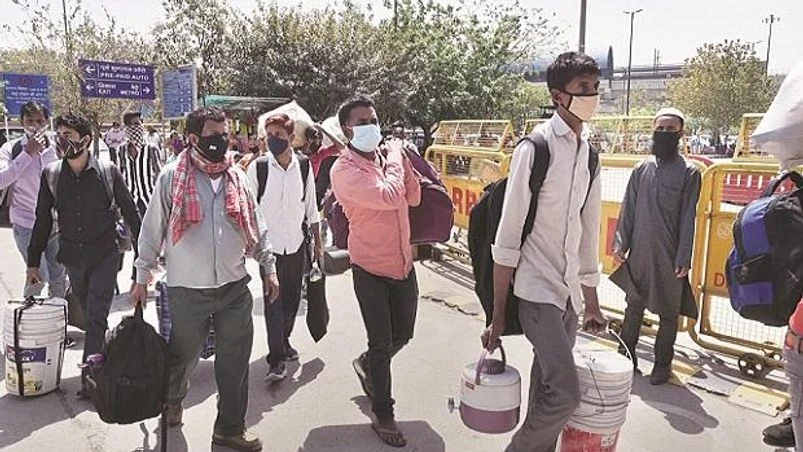 What should the government do to address deepening inequality?
What should the government do to address deepening inequality?
A recent survey claimed that the annual income of the poorest 20% of Indian households dropped by 53% in 2020-21 from their levels in 2015-16. This report tries to delve into the reasons behind it
)
However, this year, something has changed. For one, the numbers are staggering. They reflect how the Covid-19 pandemic has upended years of progress India had made in addressing this systemic problem.
In the latest round of the ICE 360 Survey 2022, conducted by the People Research on India’s Consumer Economy, it was found that the annual income of the poorest 20% of Indian households -- which was constantly rising since 1995-- plunged 53% in the pandemic year 2020-21 from their levels in 2015-16. In the same five-year period, the richest 20% saw their annual household income grow 39%.
India’s K-shaped economic recovery is deepening the societal fault lines of income and expenditure. Automakers are beefing up their SUV portfolio but sales of two-wheelers are at their lowest in nine years.
Attrition in Indian IT companies has meant a good placement season in colleges even amid the pandemic, but low-skilled labour is losing out on earnings because of the return of lockdowns and curfews in the big cities. “Only the rich can work-from-home,” is a common refrain of those on the lower-end of the income spectrum.
Oxfam India’s report, titled ‘Inequality Kills’, said the richest 98 Indians own the same wealth as the bottom 552 million people.
Also Read
In 2021, when India witnessed the devastating second wave of Covid-19, the country also added 40 new billionaires to take the country’s tally to 142.
The Oxfam report points out some reasons explaining how the government’s policies amid the pandemic exacerbated wealth inequality in India.
Reduction in the corporate tax rate in 2019-20 from 30% to 22% led to a loss of Rs 1.5 lakh crore. During FY21, GST revenue, income tax and corporate tax collections declined. The government failed to meet its disinvestment target of Rs 2.1 lakh crore. And the Centre compensated this reduction in tax revenue through an increase in excise duties on petrol and diesel.
The Centre earned nearly Rs 8.02 lakh crore from taxes on petrol and diesel during the last three fiscal years, of which more than INR 3.71 lakh crore was collected in FY21 alone.
This led to an increase in the prices of essential commodities such as food grains and vegetables, which disproportionately affected the lower-middle class and the poor.
“A 1% wealth tax on 98 richest billionaire families can finance the Ayushman Bharat scheme for more than SEVEN years OR the Department of School Education and Literacy of the Government of India for one year” reads the report Inequality Kills, India Supplement 2022, by Oxfam India
To address this rise in inequality, experts have suggested reintroducing the wealth tax, which was abolished in 2016, or a one-time tax on the wealthy for Covid-19 economic recovery.
A Business Standard editorial says low-skilled job creation, which can create employment for a low-skilled workforce, is the need of the hour.
Given the government’s minimal fiscal leg-room, institutions such as the National Investment and Infrastructure Fund and the development finance institution must be tapped for this purpose.
We spoke to Santosh Kumar Mehrotra, Professor of Economics, at, Jawaharlal Nehru University, to understand how India can address its inequality problem. He says, the government needs to take firm steps to increase jobs. A rise in non-farm jobs will see an increase in real wages. And without an increase in the labour force participation rate, the government cannot address the problem of poverty.
Watch video
More From This Section
Don't miss the most important news and views of the day. Get them on our Telegram channel
First Published: Jan 27 2022 | 8:30 AM IST

